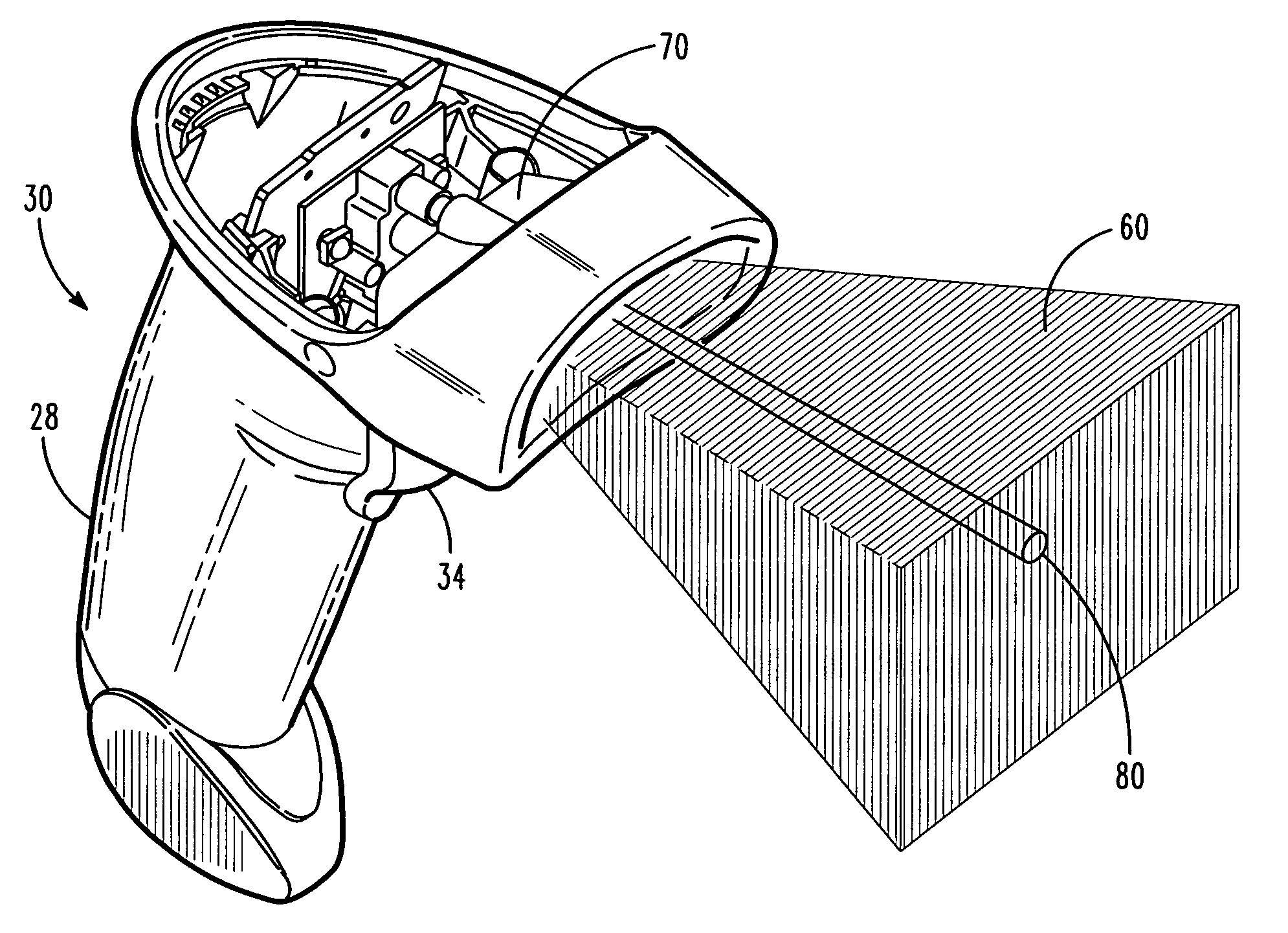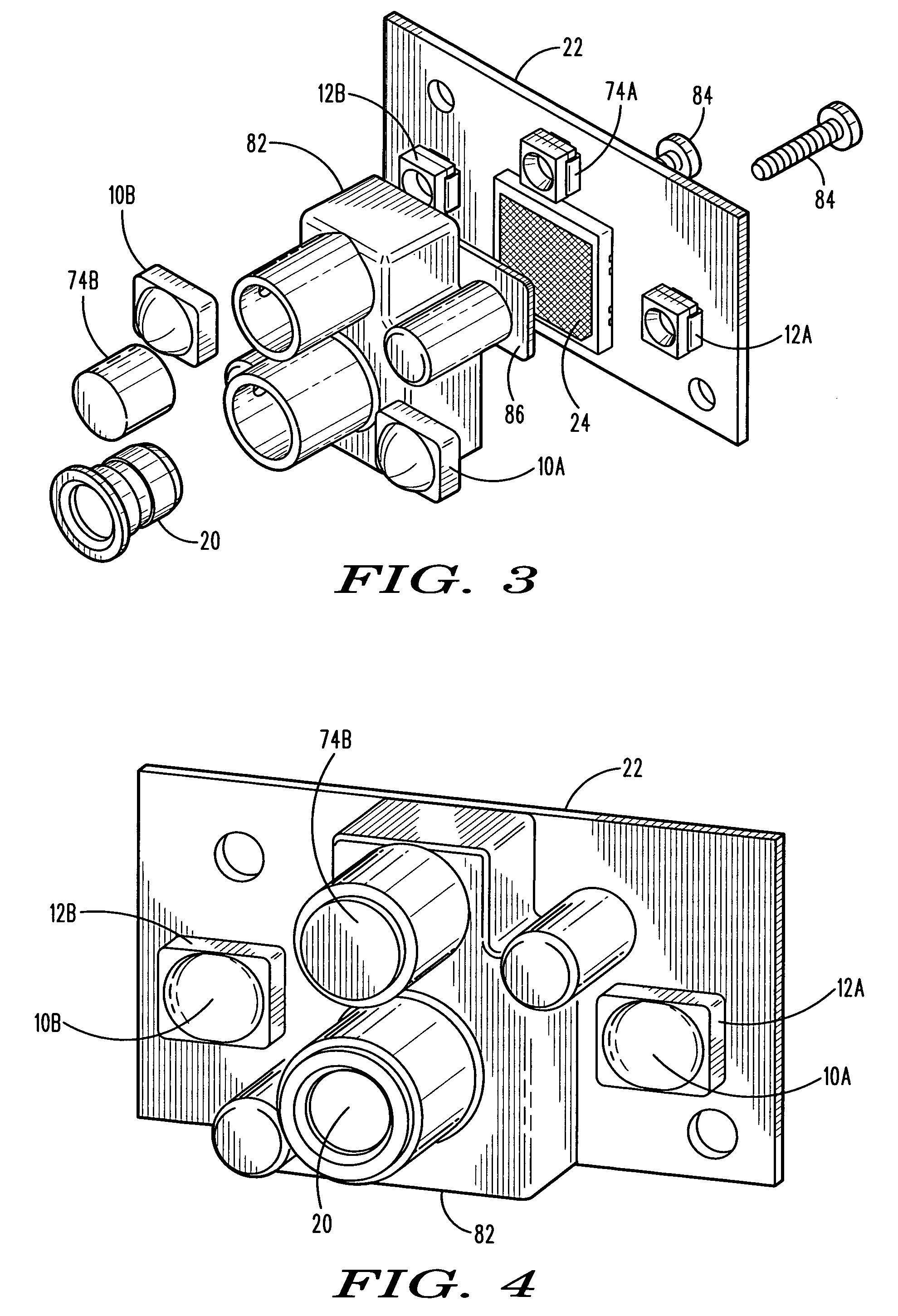Imaging reader and method with dual function illumination light assembly
a reader and light assembly technology, applied in the field of imaging readers and methods with dual function illumination light assemblies, can solve the problems of difficult use of imaging readers, especially handheld movable readers, and the operator cannot see exactly whether a target is being targeted, so as to reduce the weight and size of readers and lighten the weight
- Summary
- Abstract
- Description
- Claims
- Application Information
AI Technical Summary
Benefits of technology
Problems solved by technology
Method used
Image
Examples
Embodiment Construction
[0028]Reference numeral 30 in FIG. 1 generally identifies a portable, handheld imaging reader having a gun-shaped housing 28 and a light-transmissive window 26 (see FIG. 6) aimable at a target to be imaged. A trigger 34 is manually depressed by an operator to initiate imaging of targets, especially one- or two-dimensional symbols, and / or non-symbols, located at, or at a distance from, the window 26. Reference numeral 50 in FIG. 8 generally identifies a hands-free imaging reader having a light-transmissive window 52 and a box-shaped housing 54 supported by a base 56 for supporting the imaging reader 50 on a countertop or like support surface. The imaging reader 50 can thus be used as a stationary workstation in which targets are slid, swiped past, or presented to, the window 52, or can be picked up from the countertop and used as a handheld reader. Housings of other configurations can be employed. A data / power cable 58, as illustrated in FIG. 8, is connected to the reader 50, but can...
PUM
 Login to View More
Login to View More Abstract
Description
Claims
Application Information
 Login to View More
Login to View More - R&D
- Intellectual Property
- Life Sciences
- Materials
- Tech Scout
- Unparalleled Data Quality
- Higher Quality Content
- 60% Fewer Hallucinations
Browse by: Latest US Patents, China's latest patents, Technical Efficacy Thesaurus, Application Domain, Technology Topic, Popular Technical Reports.
© 2025 PatSnap. All rights reserved.Legal|Privacy policy|Modern Slavery Act Transparency Statement|Sitemap|About US| Contact US: help@patsnap.com



